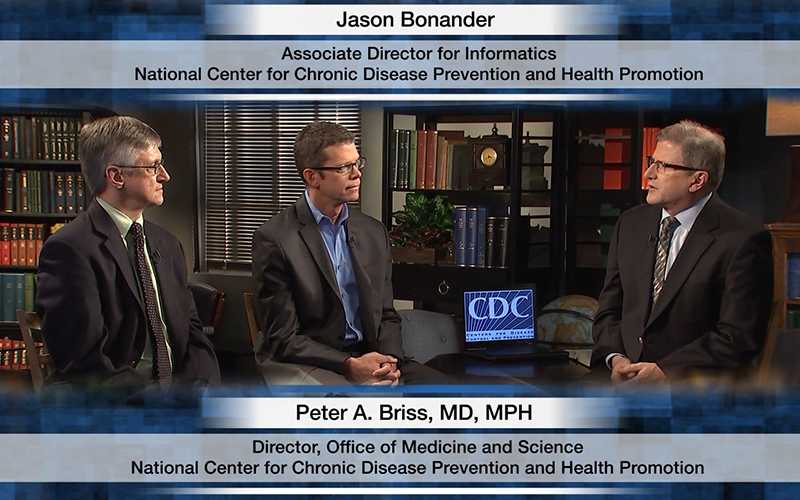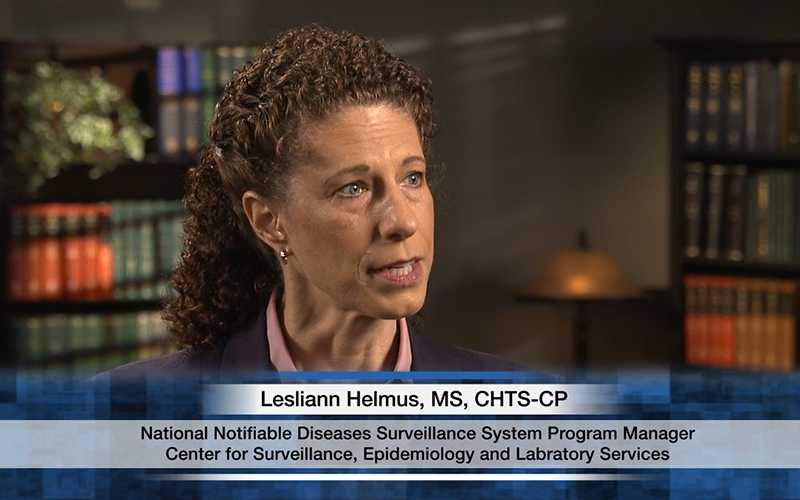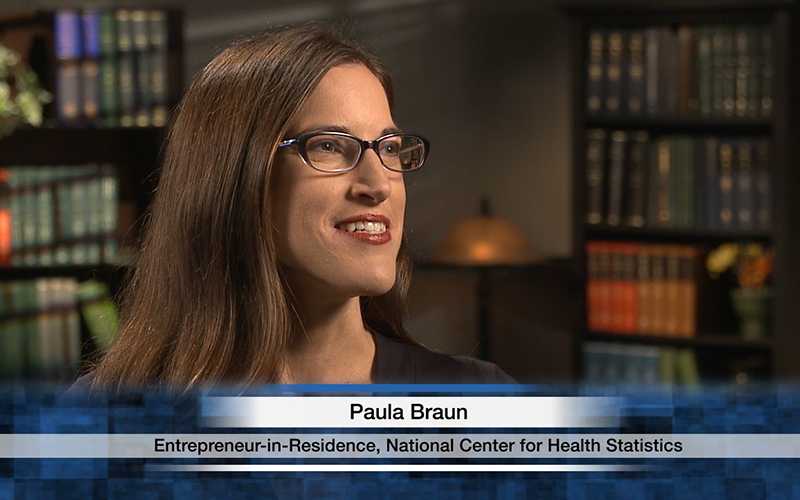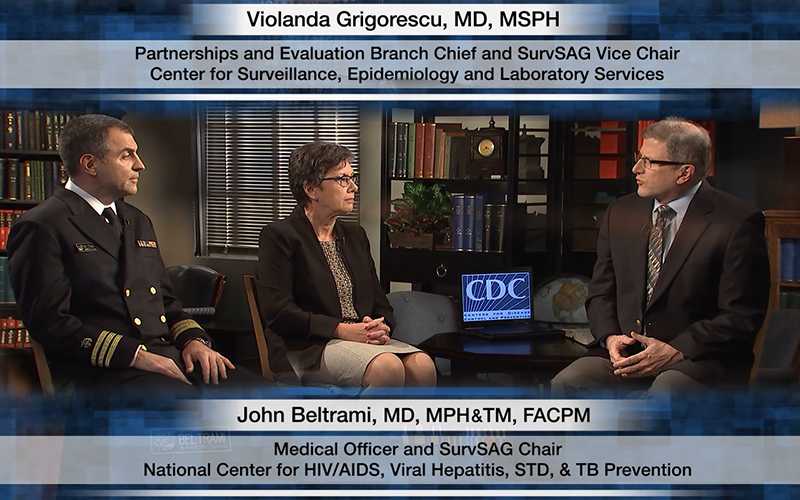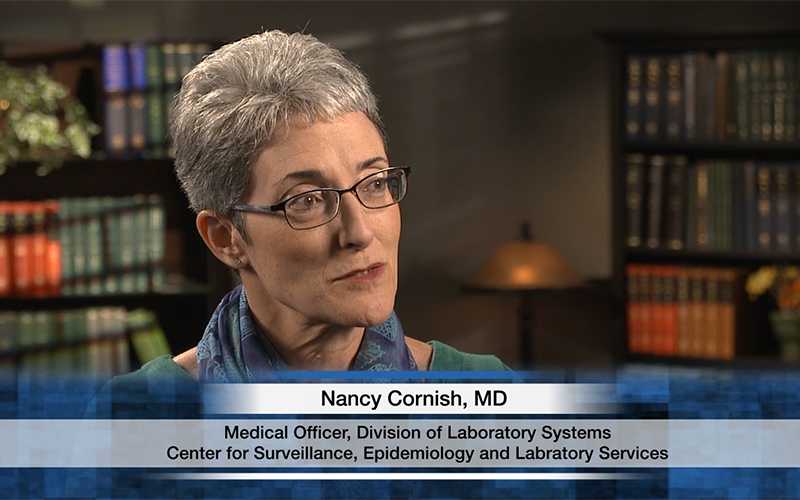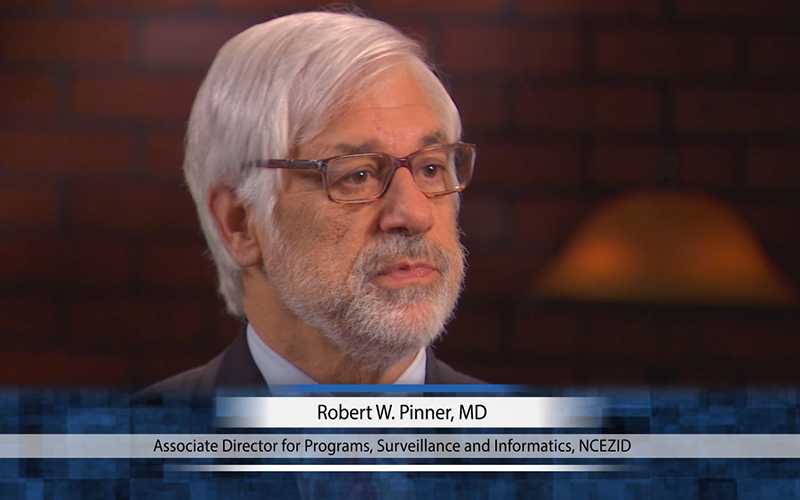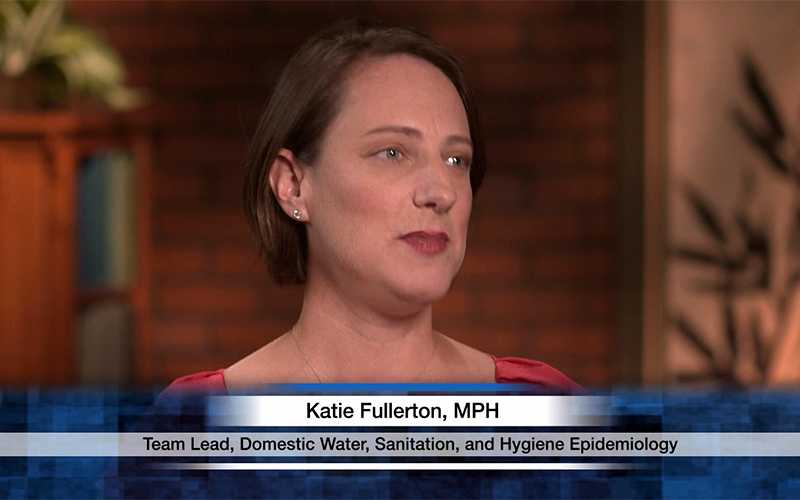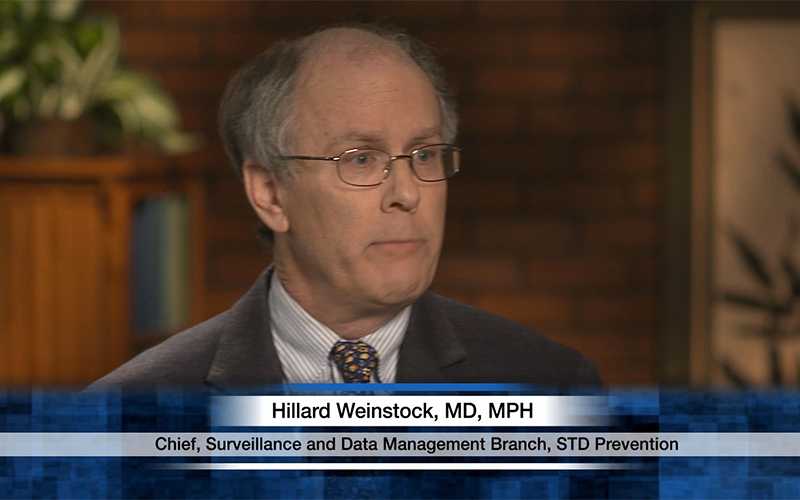Multimedia
Featured here are interviews with experts from around CDC which showcase the work being done to improve surveillance at the local, state and federal levels. Together, we are making surveillance:
- Newer: Modern systems, more efficiency
- Faster: Timely data, more answers
- Smarter: Fewer silos, more connectivity
- Better: Clearer picture, more protection
The Office of Public Health Scientific Services is leading the CDC Surveillance Strategy. In these videos, Dr. Chesley Richards engages experts in discussions about their day-to-day work being done by CDC and its partners to accelerate the Strategy.
Conversations on Public Health Surveillance
| Peter Briss, MD, MPH, Jason Bonander, MA
January 2017 Timely and accurate data at the local level ensures a fuller picture of health, better decision making, and faster public health action. Keywords: chronic disease, informatics, electronic health record |
|
| Lesliann Helmus, MS
January 2017 Standardized reporting mechanisms save local, state, and federal health organizations time and money while improving health threat detection. Keywords: notifiable disease, standards, message |
|
| Nancy Cornish, MD
January 2017 Interoperability between hospitals, clinical labs, public health labs, and public health departments ensures quick detection of outbreaks. Keywords: lab reporting, national surveillance, communication |
|
| John Beltrami, MD, MPH&TM, Violanda Grigorescu, MD, MSPH
January 2017 Surveillance system improvements require partnerships and collaboration across CDC to successfully facilitate progress at the state and local levels. Keywords: Surveillance Science Advisory Group, CDC Surveillance Strategy |
|
| Paula Braun, MSA
January 2017 Modernizing mortality data requires speed and connectivity which will allow for quicker, more accurate identification of trends. Keywords: Vital Statistics, death certificates, death registration |
|
| Michael F. Iademarco, MD, MPH
September 2016 Surveillance improves public health response, allowing systems to adapt to current and future public health innovations. Keywords: technology, healthcare, rapid response |
|
| Robert W. Pinner, MD
September 2016 Utilizing surveillance with information technology provides challenges and opportunities for public health. Keywords: electronic lab reporting, IT |
|
| Michael A. Coletta, MPH
August 2016 Surveillance innovations can lead to higher efficiency and faster decision-making at the local, state, and national levels. Keywords: syndromic surveillance, surveillance workforce, electronic data |
|
| Hillard Weinstock, MD, MPH
August 2016 Notifiable disease surveillance from health departments helps the CDC understand disease burden and trends. Keywords: emerging technology, quality data |
|
| Katie Fullerton, MPH
August 2016 Surveillance provides opportunities to standardize, harmonize, and streamline data to inform public health responses. Keywords: notifiable disease, outbreak |
- Page last reviewed: June 29, 2017
- Page last updated: June 29, 2017
- Content source:


 ShareCompartir
ShareCompartir
